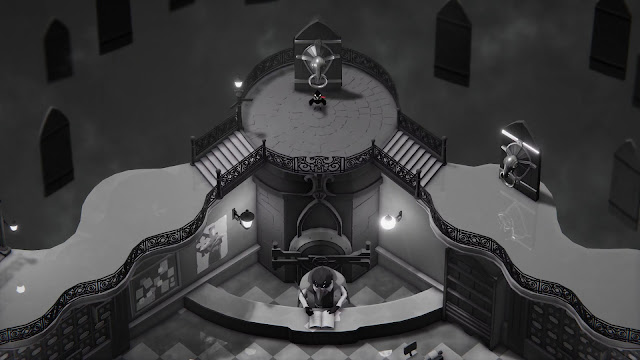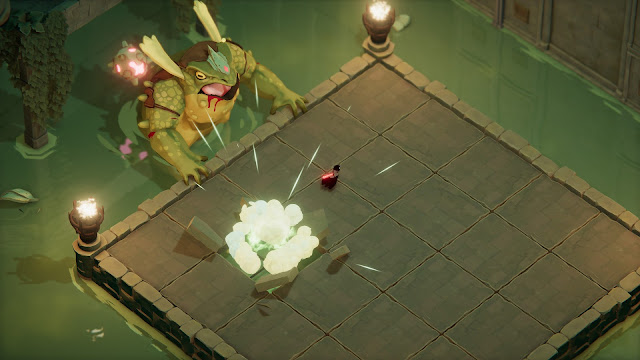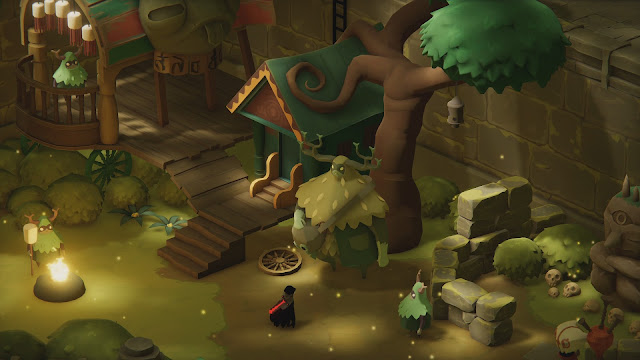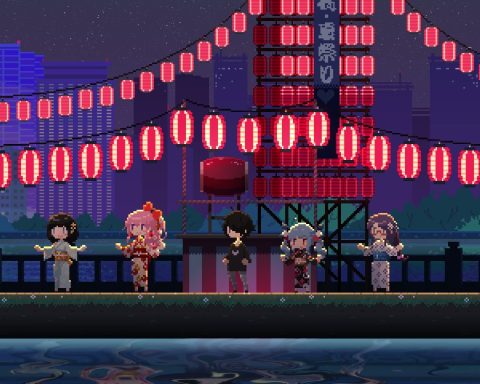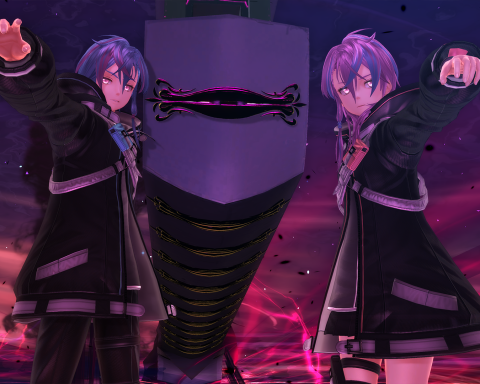It’s weird that for as long as The Legend of Zelda has been a series, we still don’t have a defined term for that game’s genre. Internet commenters frequently debate whether Zelda should be considered an RPG, and the official title of “action-adventure” is so vague that it also includes very un-Zelda-like games like Uncharted, Tomb Raider, and Assassin’s Creed. I wish there were a more precise term to categorise the games that follow the same combat-puzzles-dungeons-bosses approach that the mainline Zelda games, and modern reimaginings like Oceanhorn, Hyper Light Drifter and Death’s Door, so that I could express that for this whole school of game design, Death’s Door stands out as one of the very best.
As the sophomoric PC project from Acid Nerve following the 2D pixel boss rush Titan Souls, Death’s Door bears an amount of polish which is commendable for its humble team. The controls, graphics and level design are all tightly finetuned, and the resulting product feels incredible to play. The team have also gone for a quality-over-quantity approach, keeping the run time and pricepoint relatively low, and for the eight to ten hours that the game has your attention, it’s hellbent on making the most of it. There’s no filler here, no wandering through featureless landscapes or dispatching cannon fodder – every minute poses an immediate challenge to the player and pushes forward with a powerful momentum.
As a game following in the footsteps of Zelda, you’d likely be interested in the atmosphere, the puzzles, the dungeons, and the combat. So here’s the analysis, in that order:
In my preview of Death’s Door, I particularly enjoyed the atmosphere and world design because it didn’t overtly draw from any existing mythologies, but instead set upon crafting its own. The full release keeps up this ethos, constantly surprising players with unusual characters, strange situations and bizarre enemies. The narrative pulls players through a limbo world between the living and the dead, where the avian hero travels through in search of souls to reach. The resonant themes of death, acceptance and aging make the tone of this game a little more mature than others of its genre, and there are more than a few poignant character interactions which balance out the rest of the game’s weird sense of humour.
It also helps that the world and level design of Death’s Door goes a great length to sell its atmosphere. The levels are sprawling affairs that make the most of the isometric graphical style, allowing pathways to unfold across itself and send players looping back to the same hub areas while maintaining a sense of progress and discovery.
This level design allowed the team at Acid Nerve to plan most of their puzzles around traversal. Rather than the very artificial-feeling puzzles in the Zelda series, which drop the player into a room and prevent them from moving forward until they use the right item or hook, Death’s Door’s puzzles are quick and brief. Usually, they’re just to use the Crow’s weapons or magical abilities in an interesting way: lighting torches, breaking walls, finding hidden keys. It’s less about making leaps of logic and more about resourcefully interacting with the environment – so while they might be disappointing to anyone who wanted more challenge in their exploration, they also keep the player feeling intrepid without ever stopping forward progress.
The game is divided up into various dungeons which lead into one another. While at first the branching paths and open-ended narrative makes the game seem open-world, the progression actually sits on the more linear side; there’s usually only one way forward and once that path’s done, you might have unlocked a skill that helps you progress further in a different direction. Skilled players might be able to sequence break or access an area early on a second run, but Acid Nerve’s focused level design very much funnels players down a correct path.
The dungeons are well designed to provide varied challenges while still feeling like “real” locations rather than contrivances for the player to surpass. They’re a good balance of puzzles, enemy gauntlets, minibosses, and some quiet, atmospheric walking to break everything up. An early one is a lavish mansion, and completing the dungeon will have players visiting the foyer, a bedroom, a ballroom and the attic, before ending up at the basement for the final showdown. The smaller spaces means that Acid Nerve had the capacity to create unique visual assets which only appear once or twice in the entire game, and thus each location starts to take on its own character. One thing I didn’t like though is the tendency of dungeons to lead into other dungeons, rather than finishing with a boss and then ejecting players to the world map. There are also a small amount of checkpoints around the world, so if the player dies, they’re sent back several screens and need to fight (or merely walk) past dozens of enemies to get another crack at the fight which killed them. I couldn’t help but feel a little dungeoned-out after a long session.
But the facet where Death’s Door really shines is the combat. Forgive me for saying this but 2D Zelda always had kind of uninteresting combat – it was all just about positioning in the right way and then hitting the attack button until the enemy died; no real display of skill required. Death’s Door takes great efforts to improve on Zelda’s design, learn from the mechanics of other indie titles, and thus make combat feel highly expressive. Even with the most basic of enemy encounters, there will be multiple ways to damage foes and dodge their attacks. Most projectiles can be deflected, some enemies can be tricked into hurting others, and enemy mobs often come in mixed compositions that challenge the player to decide which to take out first. Combat is active and cerebral, empowering players at every touch. It really says something when, even hours into the game, I would still grin in excitement whenever I was faced with a new enemy type.
The same can be said for bosses, which are all lovingly crafted to be showstopping experiences. Having gained experience from creating Titan Souls, the bosses of Death’s Door are all fair fights, but present a considerable amount of challenge to surpass. The attack patterns require mastery of the various attacks and spells available, and savvy or aggressive players can score a few extra hits in-between boss attacks for a quicker takedown. The graphical design and personality of the fights are also a highlight. I remember each boss vividly, even as each subsequent one topped it in challenge and spectacle.
Death’s Door is a tremendously well-designed game, with superb production values and a tight core gameplay loop. I was immersed and impressed the whole way through, ready to rise to any challenge the game would throw at me, because I was so in love with its design and its world. You don’t have to be a fan of Zelda-style games to see the appeal of this one: Death’s Door is simply the tried and true fundamentals of game design, refined and polished to the ultimate degree.


